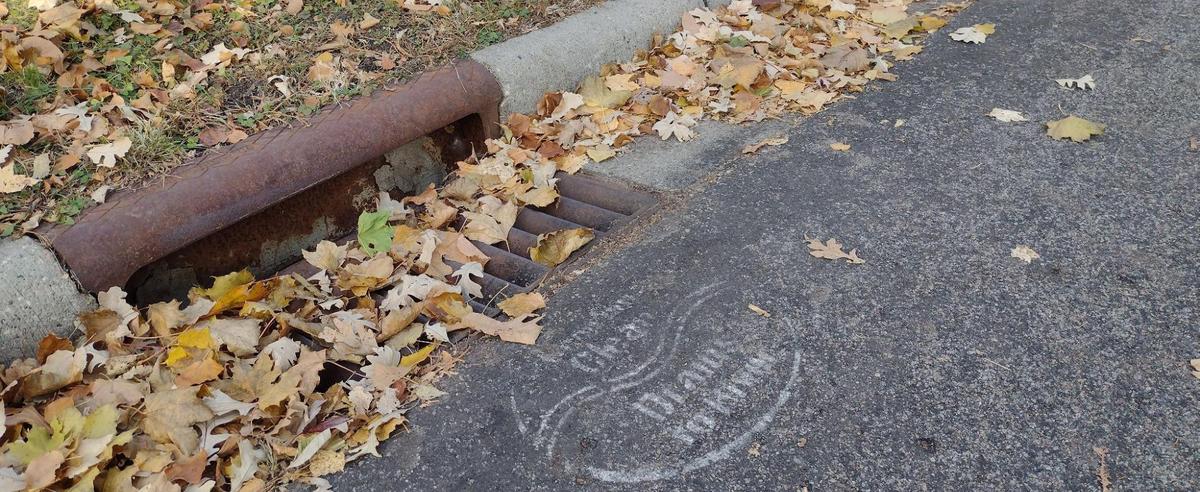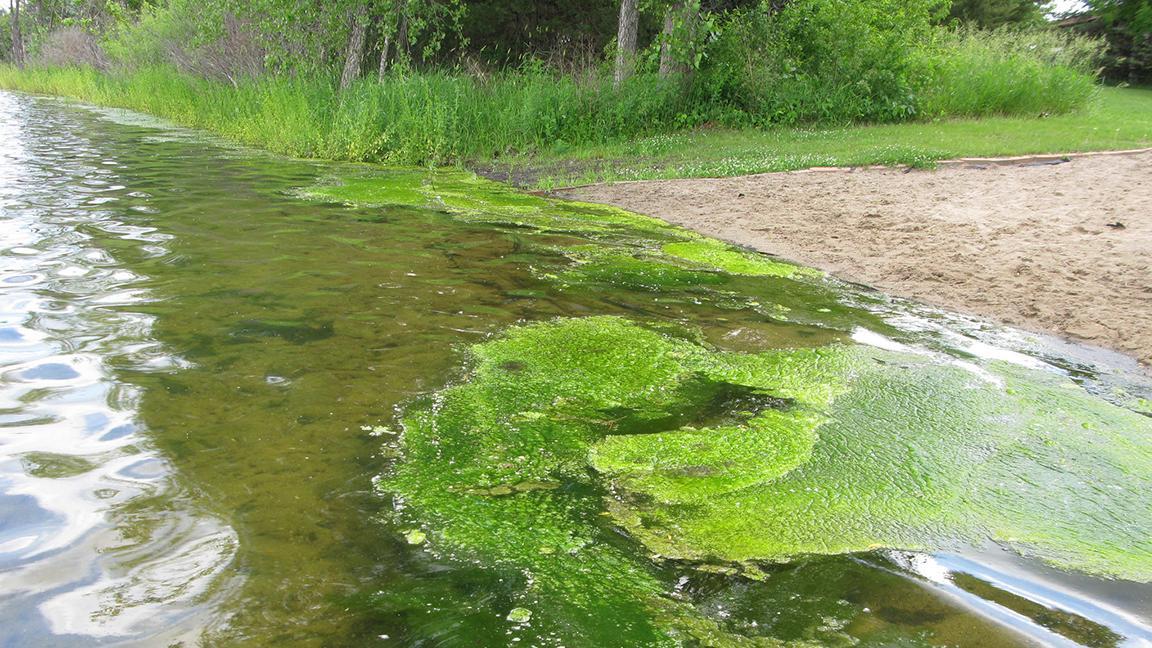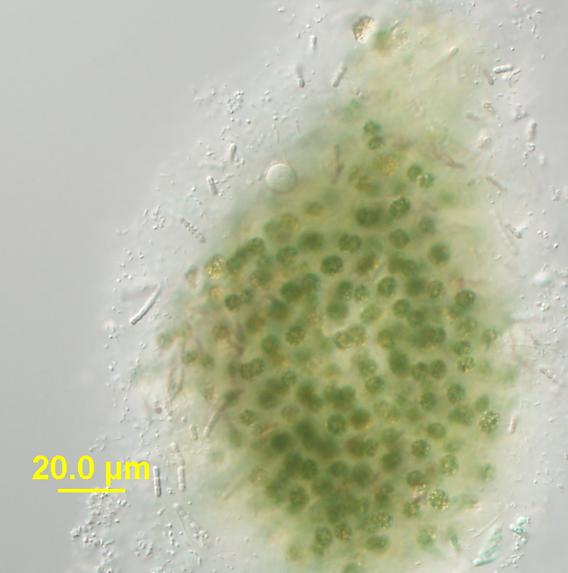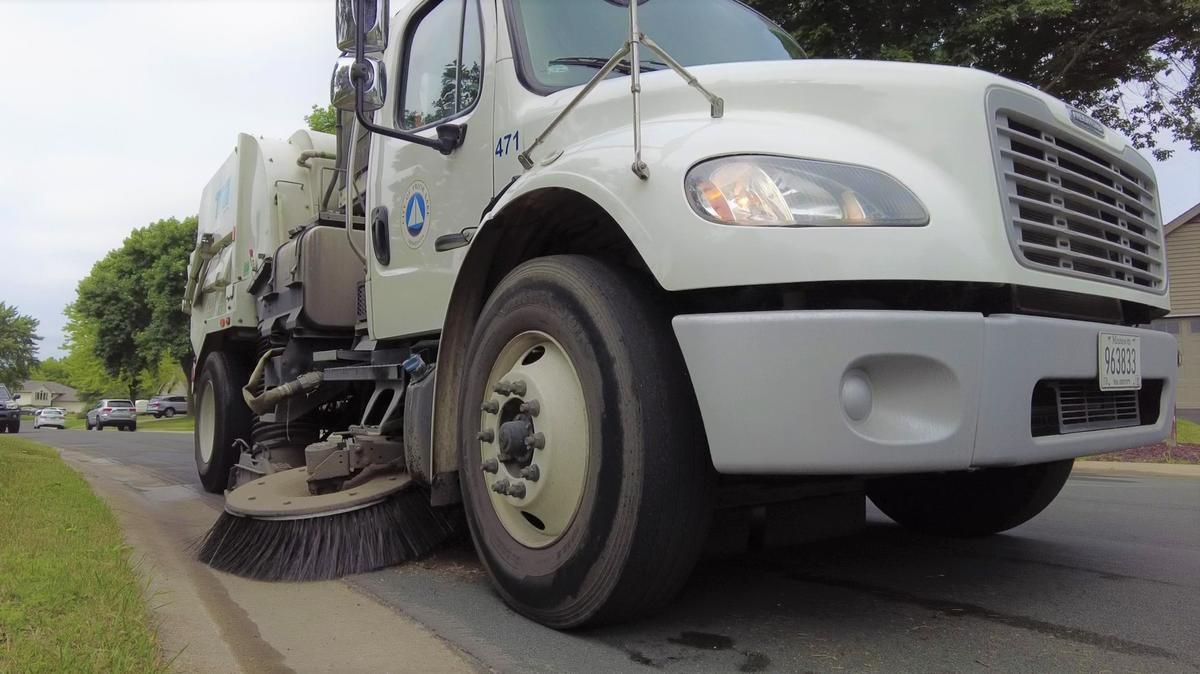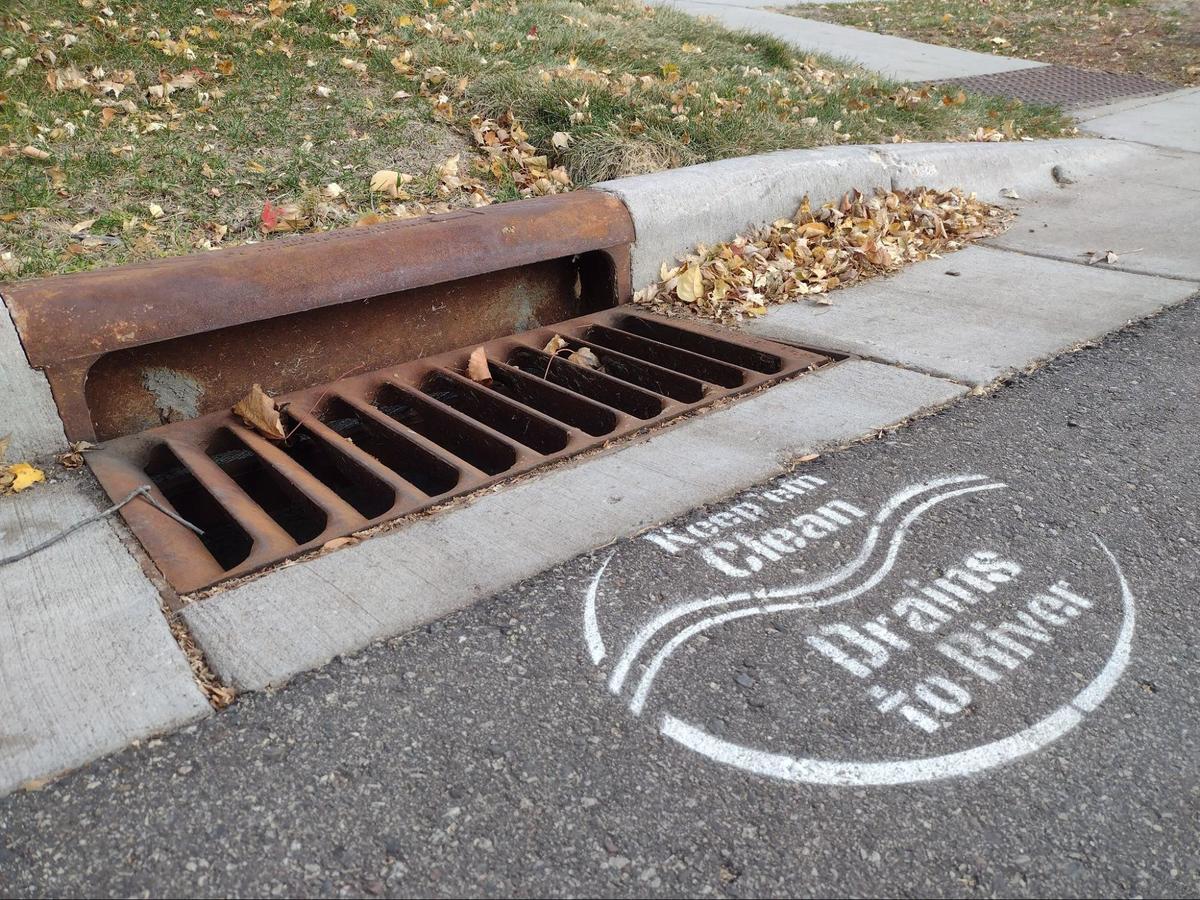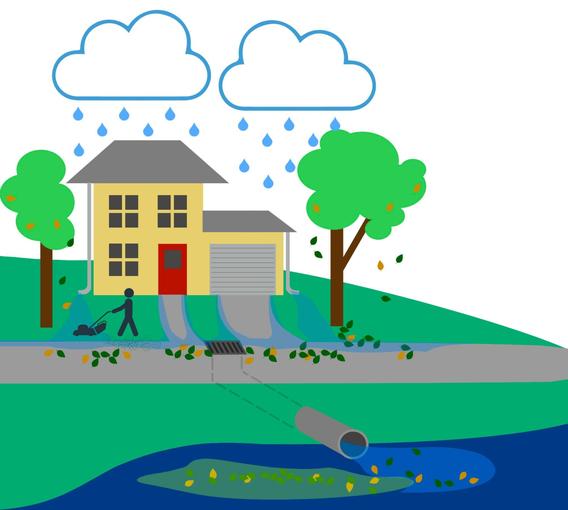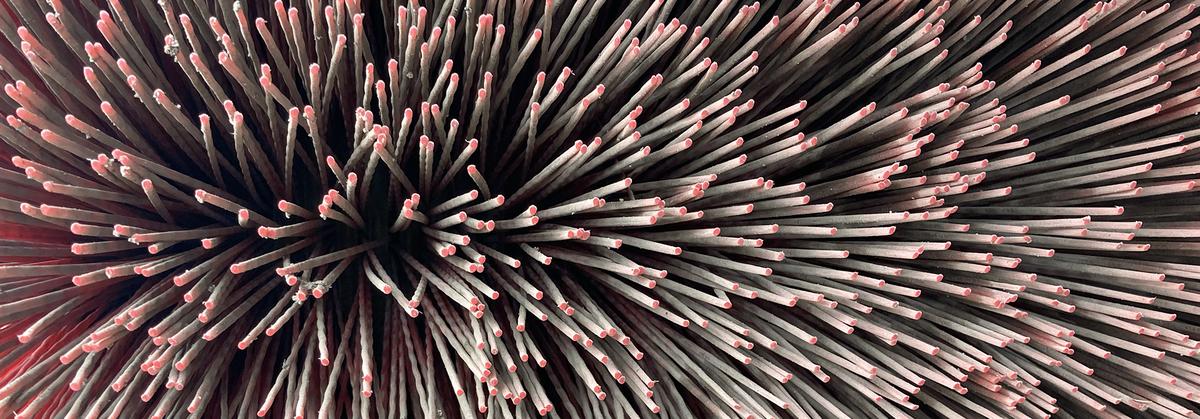
Our March 2023 extension column is by Minnesota Sea Grant and Water Resources Center Extension Educator Maggie Karschnia. We hope it sweeps you away!
Image credit: M. Thoms/MNSG
A Sweeping Solution to Stormwater Pollution
There’s a surprisingly simple and proven solution to stormwater pollution. When it rains in urbanized places like parking lots and paved streets, instead of soaking into the ground, stormwater runs off these impermeable — essentially water-proof — surfaces picking up and transporting pollutants along the way. Some of the pollutants in stormwater come from what’s washed off impermeable surfaces and some pollutants come from leaves and other organic debris that clog storm drains. When polluted stormwater ends up in our rivers and lakes, people and pets and livelihoods are at risk.
Pollution isn’t the only problem. Storm drains clogged with organic debris cause street flooding, which can make walking, biking, and driving hazardous.
Image credit: Maggie Karschnia/MNSG & WRC.
As Minnesota constructs more impermeable buildings, streets, parking lots and other structures, our problems with stormwater pollution and flooding will increase.
This column is about a sweepingly simple solution to reducing stormwater pollution that can also reduce street flooding.
What goes with the flow?
Stormwater that enters storm drains typically flows untreated to the nearest pond, lake, or stream, bringing with it leaves, grass clippings, trash, soil, road debris, and other materials picked up along the way. Organic debris, such as leaves and grass clippings, in stormwater contains high amounts of phosphorus which is a nutrient that algae and plants need to grow.
Stormwater with too much phosphorus can lead to excess algal growth in lakes and streams and result in harmful algal blooms or HABS.
Image credit: MPCA
Harmful Algal Blooms (HABs)
HABs can be a nuisance by causing thick mats of algae to grow on ponds and lakes. HABs can also be toxic.
Some species of algae, especially blue-green algae (also called Cyanobacteria), produce toxins that at high levels can make water unsafe for people and animals. This image of a small colony of Cyanobacteria called Mycrosystis aeruginosa is often responsible for toxic algal blooms. The cells are small — only a few micrometers in diameter — and can only be seen with the naked eye when they form large clumps.
Image credit: USGS.
Simple Sweeping Solutions
One simple solution to reduce phosphorus inputs to water bodies from stormwater is street sweeping.
Image credit: Maggie Karschnia/MNSG & WRC
Why Street Sweeping?
Research by University of Minnesota Professor Sarah Hobbie in 2022 demonstrated that street sweeping is an effective method for reducing phosphorus in stormwater. Street sweeping equipment removes leaves and other debris from streets which can be a significant source of phosphorus before that material gets into storm drains and then to our lakes and rivers. This research was funded by the Minnesota Stormwater Research Council.
Image credit: Maggie Karschnia/MNSG & WRC
Get Swept up! Clean Sweep Education & Training Program
The Water Resources Center (WRC) and Minnesota Sea Grant (MNSG) at the University of Minnesota partnered with the Minnesota Pollution Control Agency (MPCA) to develop the Clean Sweep Program.
The Clean Sweep Program is an education and training program designed to help communities initiate street sweeping programs that will help them meet their water quality goals by targeting their efforts where it counts the most. The Clean Sweep project team used a series of surveys, focus groups, and case studies to help develop the Clean Sweep Education and Training Program and the program continues to grow.
The Clean Sweep project team is developing education and training materials to address key street sweeping questions such as:
Where to sweep?
- Not all streets are equal. Streets that have larger, older trees hanging over them and that drain directly to water bodies should be swept more often. The research team is developing methods that will help communities target high phosphorus loading areas using tree canopy maps and drainage area information to prioritize street sweeping routes.
When to sweep?
- It’s not only about sweeping in the right place, it’s also about sweeping at the right time. The research team is developing methods for communities to assess tree canopy surveys, staff capacity, and equipment limitations to help them prioritize when and how often to street sweep in order to maximize benefit.
How to sweep?
- There are many components to a street sweeping program beyond just the truck. Communities need to consider public outreach, storing and disposing of materials, selecting from the different equipment available, and more. The research team is developing information, resource lists, and tools to help communities develop effective street sweeping programs.
Join us at a Clean-Sweep Event
The University of Minnesota Water Resource Center and Minnesota Sea Grant plan to hold street sweeping workshops in April and May, 2023. The workshops are designed to provide communities with tools and resources to develop or enhance a street sweeping program to improve water quality. Each event will highlight a successful local street sweeping program.
Contact
Email Maggie Karschnia for more information or to subscribe to a newsletter. See the Clean Sweep Program website for the upcoming workshop schedule.
More Information
- UMN Water Resource Center and Minnesota Sea Grant Clean Sweep Program. Education and training program materials, events, and more.
- UMN Water Resource Center’s Developing a street sweeping credit for stormwater phosphorus source reduction by Sarah Hobbie.
- Minnesota Pollution Control Agency’s Minnesota Stormwater Manual page with street sweeping guidance.
- Stormwater Assessment and Maintenance UPDATES newsletter.
